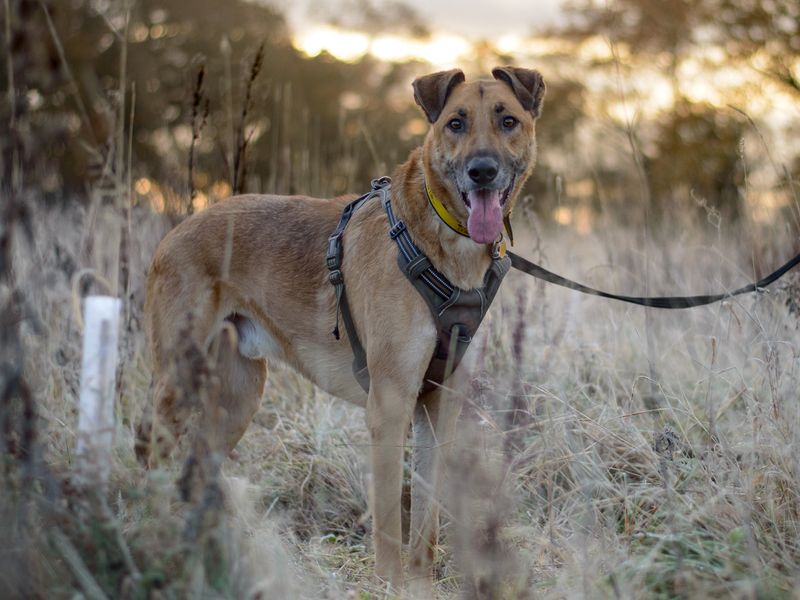How to stop your dog pulling on the lead
Find out how to help your dog walk nicely and stop pulling on the lead.

Going out for walkies can be the most exciting part of your dog’s day. It’s easy to see why your dog might start pulling on their lead to get where they want to go faster.
To make sure you’re safe from being pulled over, it’s important to teach them to walk calmly.
One of the most common reasons dogs pull on their lead is because they’ve learned that’s how they get to move forward. Whenever your dog pulls, taking just one step with them gives a clear signal that pulling works.
Teaching your dog to walk with a loose lead takes a great deal of patience and time. But it’ll be well worth it when you’re out on a lovely, calm stroll with your best pal.
For help getting your dog to walk nicely on the lead, and more great training advice, sign up to our Dog School. Four fun weekly puppy and dog training courses tailored to your dog's needs.
Walking nicely on the lead
Follow these steps and your dog should be walking nicely and calmly on the lead in no time.
Choose equipment that is comfortable and safe
A quick internet search will show you equipment that promises to ‘cure’ pulling, but some equipment causes pain or discomfort when the dog pulls by putting tension in a sensitive area. This is unnecessary and can be unpleasant and confusing for them.
Walk your …
Reward your dog when they are by your side
You need to teach your dog that being near you pays off.
Starting in your home or garden where it’s calmer, reward your dog for sitting or standing by your side. It’s much easier for your dog to learn new behaviours in quiet places where they won’t be easily …
Practice without the lead to begin with
At first, practice without the lead attached. Then you can start to introduce it once your dog is reliably following you.
You may need to hold something your dog wants, like a tasty treat or fun toy, to get them to stand and walk by your side to start …
Next, add in movement
As you move forward, reward your dog whenever they are by your side. When they begin to get the hang of it, slowly increase the time and distance between rewards.
Changing direction every so often will teach your dog to keep a close eye on you.
Gradually …
Consistency is key
Be consistent with your training each time you go out with your dog.
This may take time but will be well worth the effort in the end.
You should expect walks to take longer while your dog is learning. But if you stick with it, your reward will be …
Stop walking when the lead starts to tighten
Teach your dog that walking next to you with a loose lead means they get to move forward – and pulling means they don’t.
The second the lead starts to tighten, stop walking. Stand still, keep quiet and don’t move forward again until the lead is slack. …
What to do if you can’t be 100% consistent
If you’re not able to be 100% consistent (e.g. if you’re running late but you still need to pop out with your pooch), it can make things easier to have two different harnesses.
You can use one harness when you don’t have time for training, to give your dog ‘permission to pull’ while they’re wearing it. And use a different harness, or attach the lead to your dog’s collar, for training sessions and for everyday walks once they no longer pull.
Your dog will learn the difference between the two and that they can pull on one but not the other. But be aware that it’s likely to take your dog longer to learn to stop pulling with this method.
Contact our Behaviour Support Line
Need help with your dog’s training or behaviour? Contact our Behaviour Support Line for free expert advice.
Call us on 03030036666
or
If you feel you need to give us a call, our free telephone service is open Monday to Saturday, 9.30am – 5pm.




